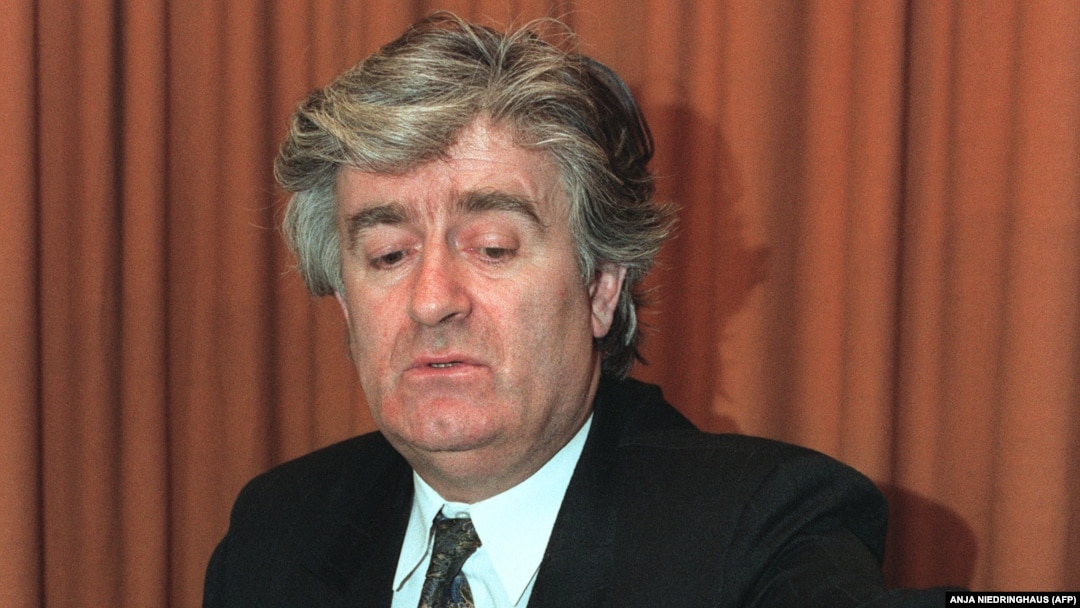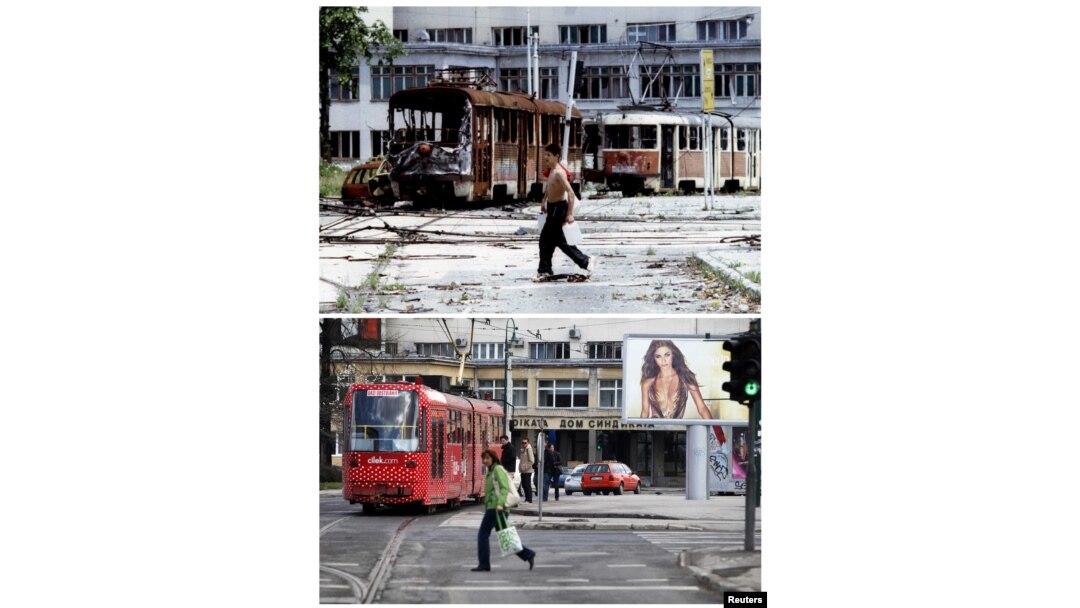The last time I saw Bosnian Serb leader Radovan Karadzic in person it was at a London peace conference in August 1992. I was a journalist working for the Bosnian daily Oslobodjenje and the conference was an attempt by the European Union to make peace in the Balkans, when the war was not yet in full force.
Only when I came back to Sarajevo did I understand the game. The Serbs were making peace with one hand and escalating with the other. There were no electricity or phone lines in Sarajevo -- so nobody in London was aware of the destruction that was happening.
See Also: Karadzic Convicted Of Genocide, Sentenced To 40 Years
After a week out of the war zone, I came back to a different place.
Sarajevo's world-famous library, built in pseudo-Moorish style, was set on fire, with more than 700 manuscripts gone forever. My newspaper's building, a beautiful glass, twin tower built in the early 1980s, was destroyed after a week of constant shelling.
The staff members of Oslobodjenje were, among others, Serbs, Croats, Muslims, and Jews. Before the war, I was not able to pinpoint the ethnic background of most of my colleagues. But I had to learn fast.
The reason Oslobodjenje was targeted by Karadzic's guns was because we -- like the rest of Bosnia-Herzegovina -- were multiethnic, and under Karadzic's world view all symbols of that shared life were to be destroyed.
It didn't help that we had our name written in Cyrillic and Latin letters at the top of the building. That sign was the first target.
PHOTO GALLERY: Sarajevo Then And Now
Our "crime," according to Karadzic, was that we did not separate, that we wanted to stay united, that we chose to publish the newspaper together, regardless of ethnicity.
All of a sudden my children were from a "mixed marriage." (My husband is a Croat.) My son, who was 13 years old at the time, said to his brother in horror: "Do you know that our mother is a Serb?"
My kids were brought up as Yugoslavs and didn't care about people's ethnicity. They weren't even particularly interested in the ethnicity of their own parents. (They were more interested in playing Monopoly or Risk.) But when they were seeing Karadzic every night on the television, they didn't want their own mother to be the ethnic kin of this proponent of violent separation.
Because it was the Serbs who were destroying their city.
For nearly 1,500 days, the systematic shelling and shooting took not only nearly 14,000 lives, but it destroyed the multiethnic structure of the city.
Video: 'There Is No Justice': War Survivors React To Karadzic Sentence
Karadzic’s grand design was "ethnic cleansing" -- so the Serbs were ordered to go to Republika Srpska, Croats were told to stick to western Herzegovina, and the middle of the country was for the Muslims.
I was one of the lucky ones. I managed to get two of my three children out of the city, taken to safety by an AFP journalist, before the siege of Sarajevo became unbreakable. (My youngest stayed with my husband and me.)
Yes, in the end, Sarajevo’s library was renovated with international aid, the Oslobodjenje building was taken over by a local tycoon and repaired. And yes, most parts of Sarajevo were eventually renovated, the roads rebuilt, the bridges fixed. But that wonderful multiethnic spirit of Sarajevo never recovered.
If I was a judge, I would sentence Karadzic to life -- just for the crime of killing the city.



